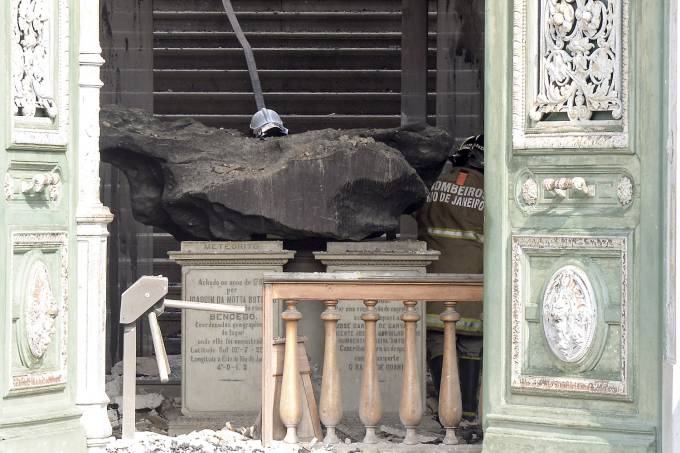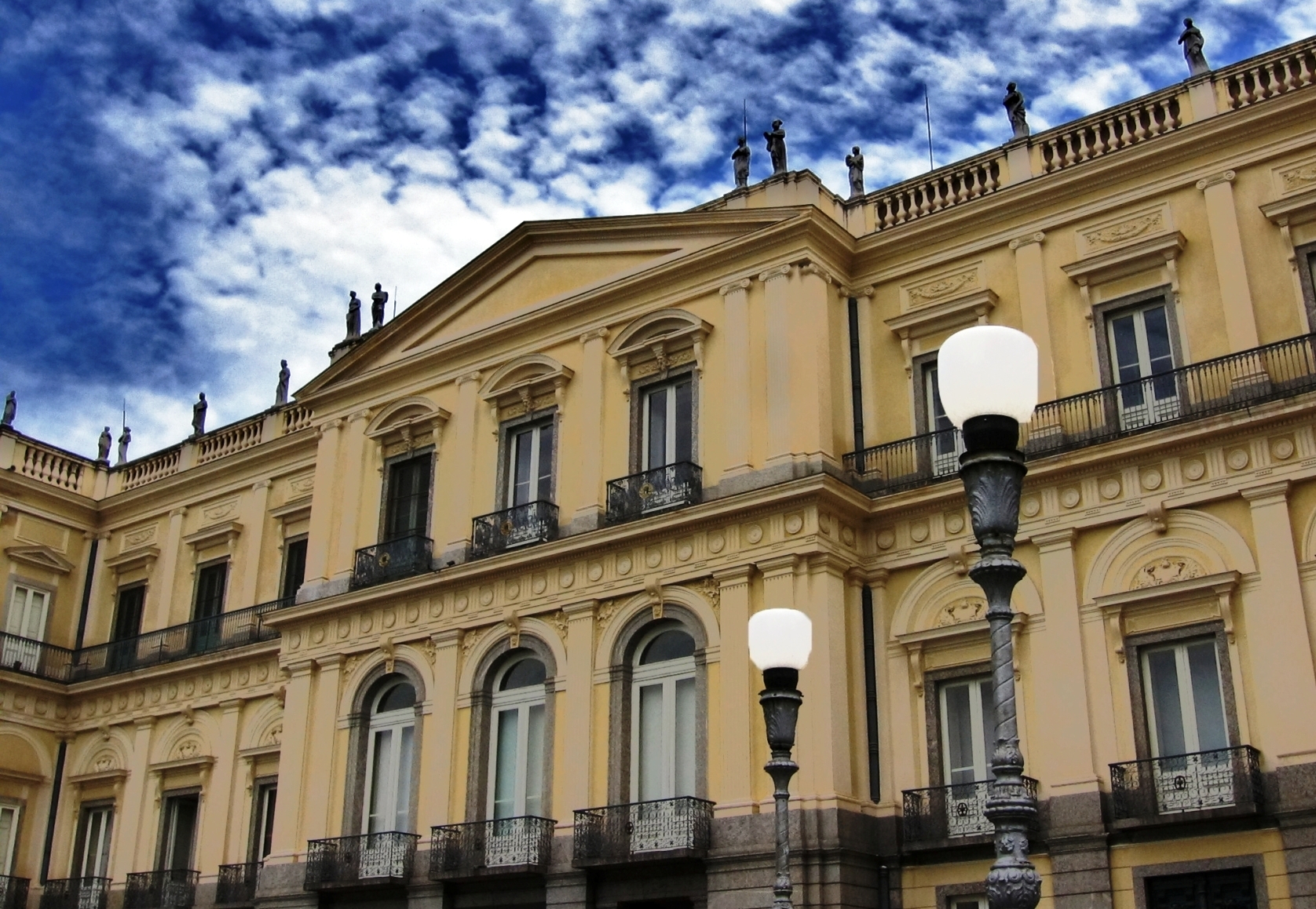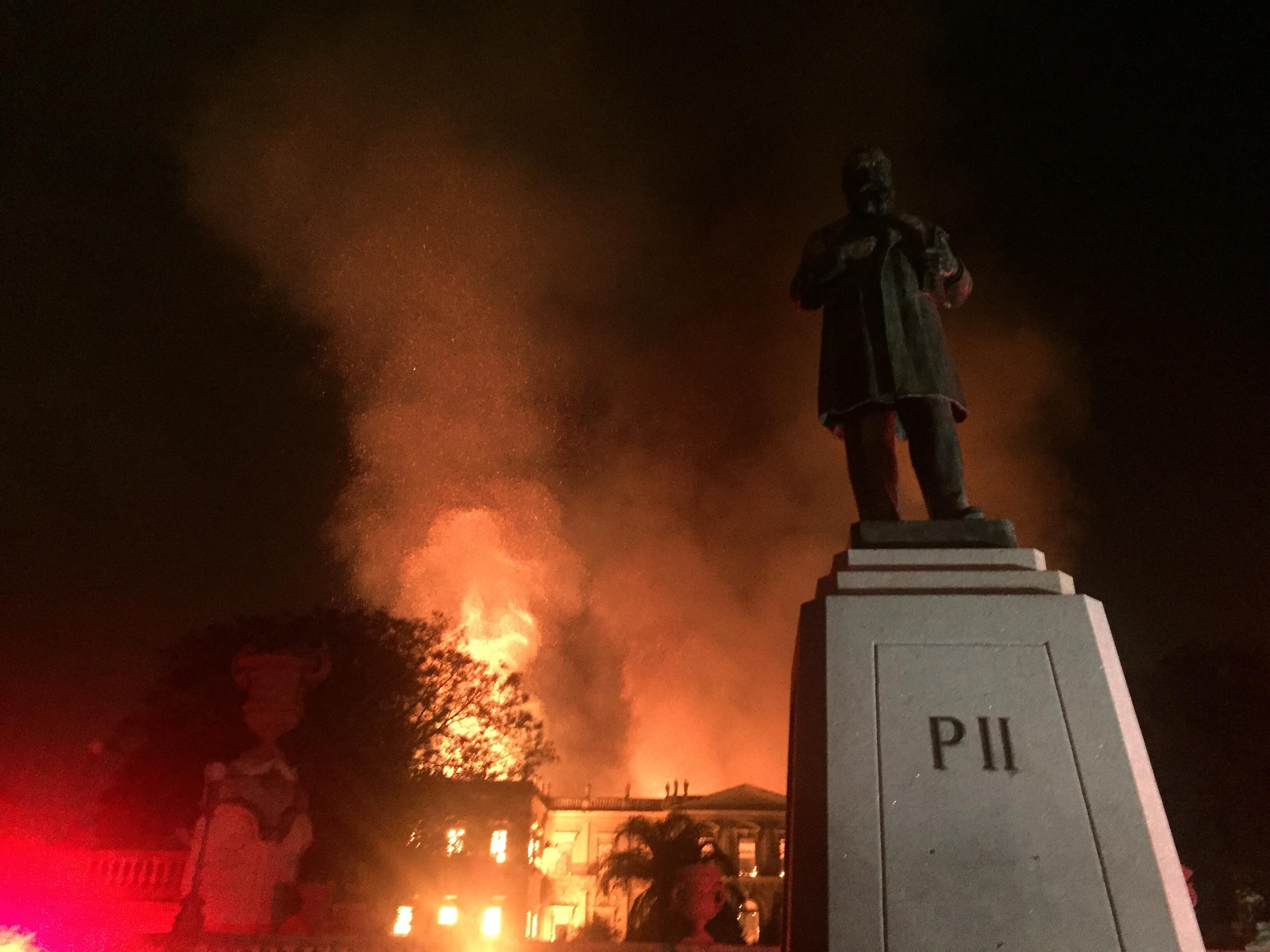With a collection of 20 million items divided among the sectors of geology, paleontology, botany, zoology, biological anthropology, archeology and ethnology, Brazil and the world watched the flames consume the National Museum of Rio de Janeiro. The country’s oldest political institution, the National Museum, completed 200 years in June 2018. Its administration has been subordinated to the Federal University of Rio de Janeiro since 1946, at the end of the Estado Novo when the National Museum passed to the tutelage of the University. “The National Museum is an autonomous institution, part of the Science and Culture Forum of the Federal University of Rio de Janeiro, linked to the Ministry of Education.”
Created by D. João VI, on June 6, 1818 as the Royal Museum, it was initially based in Campo de Santana and aimed at promoting the cultural, scientific, intellectual and economic progress of the country.
In 1892, this museum was installed in the São Cristóvão palace, which was built in the early nineteenth century and housed D. João VI when he moved from Lisbon to Brazil in 1808. The palace was also home to D. Pedro I and D. Pedro II. Initially the palace belonged to a Portuguese merchant named Elias Antônio Lopes and he donated the house to D. João VI, claiming to worry about the welfare of the Portuguese king.
Throughout national history, the Palace of Saint Kitts witnessed remarkable moments, such as the signing of the decree of independence of Brazil by Maria Leopoldina (Empress Consort of the Empire of Brazil). Between 1889 and 1891, the Palace hosted the first republican constitution of Brazil. It is worth mentioning that many important names visited the place on trips to Brazil, such as Albert Einstein and Marie Curie, famous scientists of the twentieth century.
The museum had a large collection of items, including: the Egyptian collection, a collection of Greco-Roman art, a dinosaur from Minas Gerais, the oldest human fossil ever found in the country, known as “Luzia”, objects that showed the richness of the indigenous culture, Afro-Brazilian culture and cultures in the Pacific, a collection of shells, corals and butterflies, as well as a collection of meteorites found on Brazilian soil.

The fire in the National Museum began after 19:30 hours when the visits were closed, there were four guards at the scene who were able to leave before the fire reached a high level. “Much of the building’s structure was made of wood, and the building had a lot of flammable material – which made the fire spread quickly.” So far it is not known what actually caused the fire, it should be emphasized here that the museum lacked the attention of the competent bodies that should ensure its proper maintenance.
In a statement, the Institute of National Historic and Artistic Heritage (Iphan) expressed its indignation at the tragedy of international repercussions, highlighting the lack of commitment of the State to the preservation of national memory. Among the international media that reported the news stand out, BCC news, Ney York Times, Forbes, Le Monde, Associated Press, Clarin, The Daily Mail, CNN, El País, The Guardian, Spielgel Online.

Brazil and the world lose much of this tragedy. “A museum is a public or private institution that serves society and its development, which acquires, preserves, researches, communicates, displays or exhibits, for study and education purposes, art collections, scientific works, among others, always with cultural value”, according to the International Council of Museums.
And good news: among some collections, some of the meteorites that were on display have already been recovered and identified by the curatorship. The image of the meteorite Bendegó at the entrance of the Museum renews the hope of a future for the National Museum of Brazil.
Text:
Fabiana Barreto (Exoss/ROCG)
Luciana Fontes (Exoss)
Source link







Комментариев нет:
Отправить комментарий